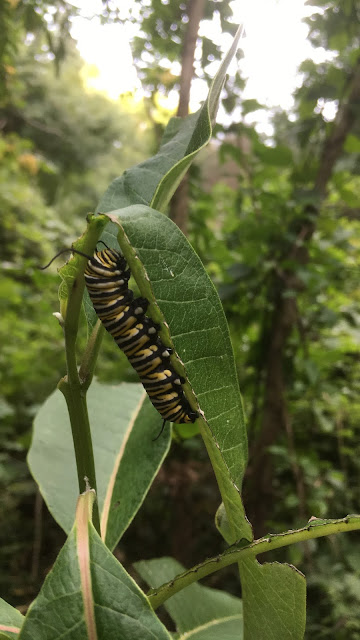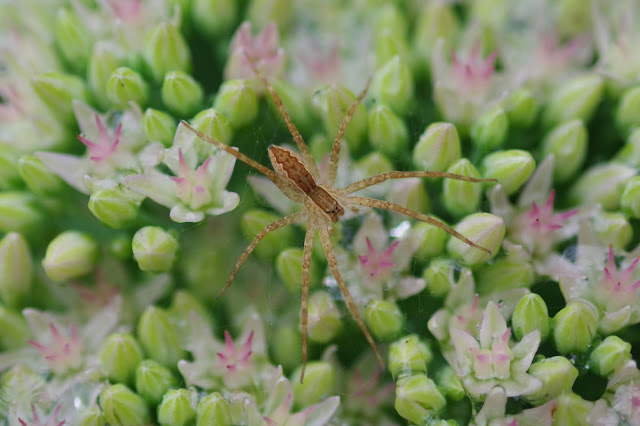I am constantly frustrated by, and complaining about, uncooperative bugs, so it pleases me to be able to present to you...
Backyard Co-Bug of the Day #1:
Monarch butterfly. This butterfly spent several hours this afternoon feeding on the autumn joy sedum. It came and went a few times, flying off and returning, but mostly just stayed there. It is somewhat shocking that it is the end of August and a monarch butterfly has not been Backyard Bug of the Day yet this year. Butterflies have been scarce in my backyard this summer.
This is a male, identified by the black spots on its hindwings.
It shared the flowers with a lot of bumblebees, but not very graciously. When this bee came closer, the butterfly kept opening its wings over it, and I am sure it must have been touching it. Several times bumblebees flew in very close, and the butterfly swatted at them with its wings. It was very different from the gentle opening, sort of occasional flapping that it was doing–it was a sharp snapping open of the wings to bat the bees away. Bumblebees have a tendency to land right on top of other bugs that are feeding on flowers, which I assume is an attempt to bully them out of the way, though it usually just looks like a sort of thoughtless clumsiness. Well, this butterfly wasn't having it, and was not going to cede its space to any bee. It did eventually send this one on its way.
Here you can just barely see the bee under the right wing.And while we're on the subject of monarch butterflies, here's a monarch caterpillar that I found on my forest walk:
There is a patch of milkweed in a clearing in the woods, as I believe I have mentioned, and a few times I have found monarch caterpillars there. It may, in fact, have been the same monarch caterpillar each time. This could be the one I saw a couple of days ago, that I could not find yesterday. This is on a different plant, and they do sometimes leave one plant to go feed on another. This one is now looking very close to pupation.
Backyard Co-Bug of the Day #2:
Net-winged beetle
Other Bugs:
The fall webworm caterpillars have dispersed from the web.
There are two of these groups of large milkweed bug nymphs in one of the milkweed patches. They're pretty interesting to observe. The move from plant to plant in a group. I have never actually seen them go from one plant to another, but one day they'll be on a plant, and the next day on another three feet away. And it's interesting that there are different stages of development in the group. Here you can see several that look like they are on their last instar before adulthood, and a tiny, early instar one, and a lot in between.
And that's it for today. No spiders, either!



























































